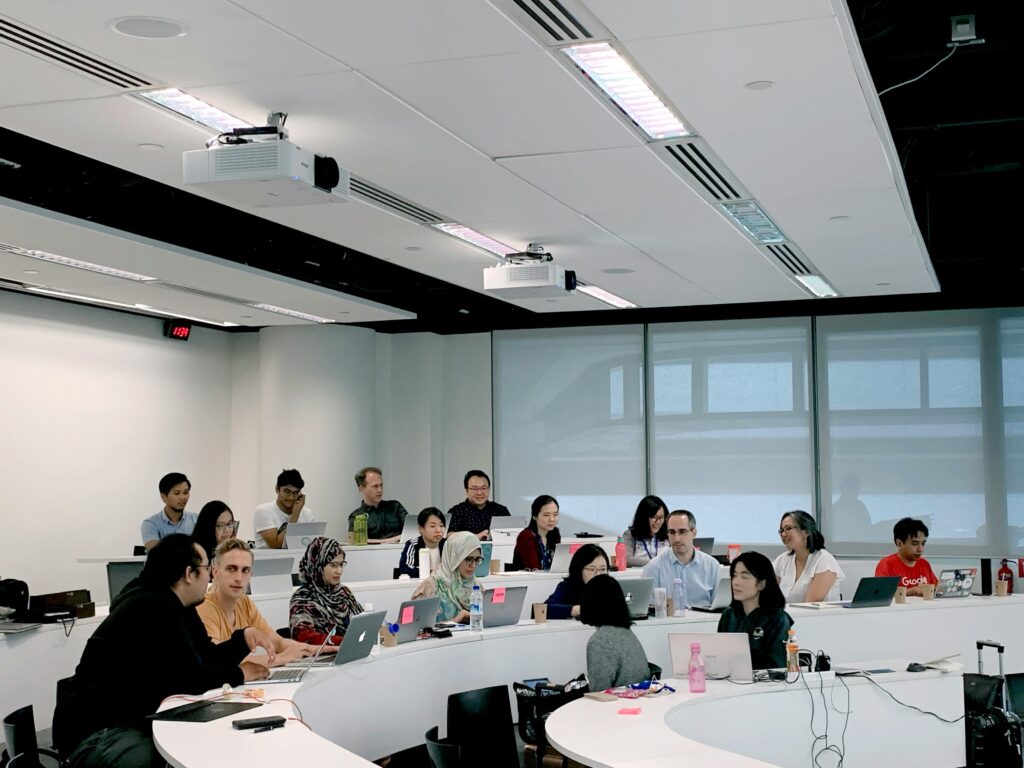Research suggests that more than 15% of the US population is neurodivergent, a term that refers generally to someone whose brain processes information in ways not typical of most individuals. The neurodivergent umbrella includes people with autism, dyslexia, ADHD, Tourette Syndrome and other learning and mental health differences that could be considered atypical.
No two neurodivergent people are alike, and each brings with them a different set of skills and talents. From an educational perspective, this means teachers and classrooms need to provide different access and support to best serve the needs of their neurodivergent students.
To explore this topic further, Verbit hosted a webinar ─ “Supporting Neurodiversity & UDL Initiatives: Best Practices for Course Design, Facilitation and Student Success” ─ with guest speaker Dr. Sherri Restauri of the Department of Psychology, Coastal Carolina University. The live event, which attracted nearly 200 attendees, highlighted how schools and educators can support neurodiversity in the classroom and explored why it’s important to create inclusive learning environments that cater to the needs of all students, including those who have different learning needs.
Dr. Restauri shared strategies for creating courses that are more inclusive and supportive of neurodiverse students, the importance of taking a proactive approach to education and tips on the best tech tools and UDL methods for teaching students.
Click here to watch the full webinar
What is neurodiversity?
Neurodiversity embraces the idea that people experience and interact with the world around them in different ways. It accentuates the positives of a unique mind by moving away from negative labels and supports the idea that there is no one ‘right’ way of thinking, learning and behaving.
“The goal of the neurodiversity movement was to flip the deficit or the biological medical model on its head and, instead, look at the strengths that exist in individuals who have differently abled brains,” says Dr. Restauri. “Neurodiversity activists do not want society to ‘fix’ these individuals. They want people to view these abnormal behaviors as being normal.”
Dr. Restauri says teachers should look for their individual students’ strengths and then decide how to best design courses to encompass all those different strengths and abilities.
“As advocates for our students in the educational space, we are looking for ways to help them to succeed,” she says. “We’re looking to fix our environment so that they can perform at their best in the environment that we’re creating, whether that be an online course, a hybrid course, a workshop or professional development setting.”
One way to do this is through incorporating more inclusive teaching practices in the classroom and developing a Universal Design for Learning (UDL), a set of principles for curriculum development that give all students equal opportunities to learn. UDLs often include a combination of best practices to engage students and help instructors meet the learning needs of a diverse student body through instructional modalities, formats and technologies.

Why inclusive learning matters
It’s important that educators understand the challenges that some neurodivergent learners face and recognize that traditional classroom settings may not always fit their diverse needs. Educators that provide inclusive learning spaces and incorporate inclusive teaching practices foster a proactive and supportive environment for all students, regardless of abilities, Dr. Restauri says.
“When your students come to you and they’re struggling with being able to participate in the way that maybe your class was originally designed, it’s not a hesitation in terms of the quality of your teaching [and] it’s certainly not a lack of attention as much as it is an inability to monitor and manage some of the particular systems within their brain,” Dr. Restauri says. “Particularly things that manage their ability to focus their attention, their ability to process information and their ability to actually provide a response to that information as well.”
Top tools for neurodivergent students
There are several tools and new technologies available to help create inclusive learning spaces. In this webinar, Dr. Restauri, an educator who oversaw online learning for nearly two decades, offers five of her personal favorites.
“Part of the reason why each of these are so incredibly useful ─ and why they’re in my top 5 ─ is that they’re probably already available to all of you,” she says. “If you teach at a college or university that has access to learning management systems and to digital publishers, you probably already have access to some of these tools.”

Text-to-speech and speech-to-text software
Text-to-speech and speech-to-text software are important tools in that they enable students to change the way they listen to and interact with lectures, offering, for example, the option to adjust playback speeds and listen at a different pace.
“Any material that’s presented on a learning management system in a software program in your learning platform or lecture capture platform needs to be presented to allow the learner, the student, to choose between having either text or audio, and preferably to have both displayed on the screen at the same time,” Dr. Restauri says.
Task management tools
Organization, tracking and self-monitoring tools enable students to better focus on tracking their assignments, keep assignment checklists and display percentages of work completed. This sort of visual and textual feedback within courses and programs helps students organize tasks and use their time more effectively and efficiently.
Tailor-made courses
‘Build-your-own courses’ and ‘build-your-own assignment’ teaching tools allow students to have a hand in designing course instruction in a way that best fits their needs and enables them to choose the modality and way that they approach assignments.
“At the beginning of every one of my classes, I allow my students to vote on their preferred format, and I actually create a specific set of instructions and rubrics that allow them to do a personalized learning path,” says Dr. Restauri. “It sounds like a lot of work, but it actually isn’t once you get it set up. When I get my end of term evaluations, this is the number one thing all of my students love, regardless of their diagnosis. They like being able to have some agency and some decision making specifically about what their courses look like.”

Structured course progression
Consistency is an important consideration in the class structure.
“Again, if you have any learning management system, you probably have the ability to actually adopt a standardized approach,” Dr. Restauri says. “And most…already have pre-built templates that you can actually download and import. This sounds like such a small technique but when you look into the research and when you ask students, ‘Why did you leave this course?,’ ‘What made what made this so difficult for you?,’ particularly when you ask students who are neuro divergent, it’s a lack of consistency in the way that they navigate and a lack of consistent instructions.”
Captions reinforce the message
Adding captions to video lectures and presentations can provide an important textual and visual tool for the neurodivergent brain.
“The more ways that they have to visualize and to incorporate that material that you’re trying to teach them, the more likely they are to actually have long-term comprehension,” she says.
Ensuring those captions are accurate is important in providing an inclusive, equitable classroom experience.
Partner with Verbit for greater classroom access
Creating inclusive learning experiences requires specialized expertise. Verbit’s team has the experience, knowledge and technologies, including live captioning, video captions, transcription and audio description to help. We’re trusted by a variety of colleges and universities, such as San Francisco State University, the University of Arizona and Oregon State University, and others, to make their classes and classrooms more inclusive. Connect with us to learn more about how we can work together to enhance the accessibility of your courses, campus events and more.




